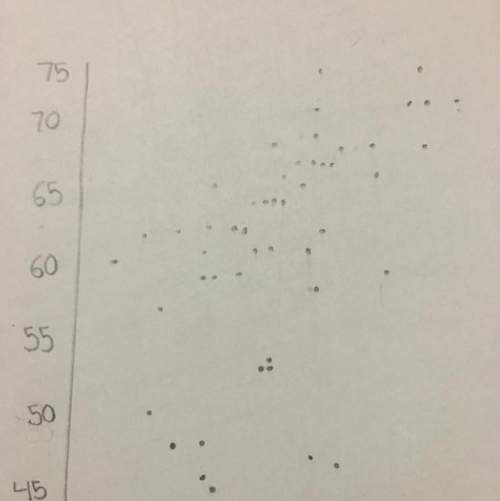
Mathematics, 02.10.2019 23:10, miyahvictoria
Areal estate agent is considering changing her cell phone plan. there are three plans to choose from, all of which involve a monthly service charge of $20. plan a has a cost of $.40 a minute for daytime calls and $.20 a minute for evening calls. plan b has a charge of $.50 a minute for daytime calls and $.14 a minute for evening calls. plan c has a flat rate of $75 with 200 minutes of calls allowed per month and a charge of $.38 per minute beyond that day or evening. a. determine the total charge under each plan for this case: 130 minutes of day calls and 50 minutes of evening calls in a month. (do not round intermediate calculations. round your answer to 2 decimal places. omit the "$" sign in your response.) cost for plan a cost for plan b cost for plan c c. if the agent will use the service for daytime calls, over what range of call minutes will each plan be optimal? (round each answer to the nearest whole number. include the indifference point itself in each answer.) plan a is optimal from zero to minutes onward. minutes. plan c is optimal from d. suppose that the agent expects both daytime and evening calls. at what point (le. percentage of total call minutes used for daytime calls) would she be indifferent between plans a and b? (do not round intermediate calculations. enter your answer as a percentage rounded to 2 decimal places. omit the sign in your response.)

Answers: 2
Other questions on the subject: Mathematics

Mathematics, 21.06.2019 12:30, Jasten
Timed*** there are 8 rows and 8 columns, or 64 squares on a chessboard. suppose you place 1 penny on row 1 column a, 2 pennies on row 1 column b, 4 pennies on row 1 column c, and so on … how many pennies are on each square? a = b = c = d = e = f = g = h =
Answers: 1

Mathematics, 21.06.2019 15:20, aliceotter2007
Asmall (but heavy) particle placed in a glass of water will follow a zigzag motion because the particle will bounce off of the water molecules it meets. this is called brownian motion. a physicist simulates this on a computer, by varying the distance a particle can travel (called the mean free length), on average, before it collides with a water molecule and assigning the change in motion to be one of 8 directions, each with a similar probability. by running the simulated particle (with the same mean free length) many times she determines that it should take 15 seconds, on average, for the particle to fall to the bottom, with a standard deviation of 1.5 seconds. next she lets a real particle fall through a glass of water and finds that it took 18 seconds. what does she conclude, and why?
Answers: 1

Mathematics, 21.06.2019 17:30, Justinoreilly71
The dolphins at the webster are fed 1/2 of a bucket of fish each day the sea otters are fed 1/2 as much fish as the dolphins how many buckets of fish are the sea fed each day? simplify you answer and write it as a proper fraction or as a whole or mixed number
Answers: 1

Mathematics, 21.06.2019 19:00, filthyfish
Teams of 4 are competing in a 1/4 mile relay race. each runner must run the same exact distance. what is the distance each teammate runs?
Answers: 1
Do you know the correct answer?
Areal estate agent is considering changing her cell phone plan. there are three plans to choose from...
Questions in other subjects:






Computers and Technology, 31.08.2020 01:01










